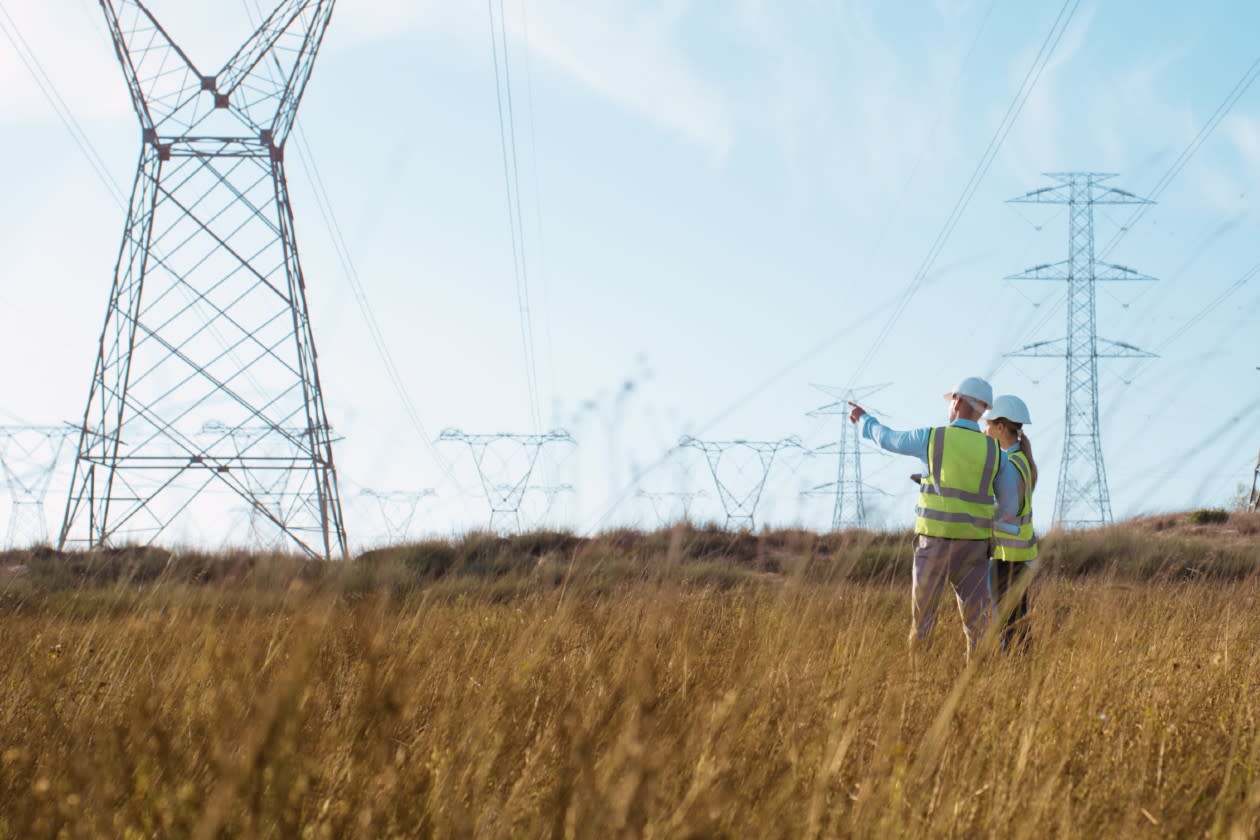SSE’s Renewables output rose 26% to 9.3TWh over the nine months to 31 December 2024. The uplift reflects an increase in capacity against a backdrop of “variable weather conditions”.
The group plans to deliver at least £22bn of critical grid infrastructure investment in the five years to 2031, to help the UK and Scotland reach their net zero goals.
Energy output from SSE’s gas-fired plants was up 15% to 12.5TWh. The Thermal division has committed to building a new biofuel plant in Ireland, set to complete in 2027 and backed by a 10-year capacity agreement.
Full-year underlying earnings per share (EPS) is expected to be in the 154-163p range, reflecting “good operational performance” despite the variable weather conditions, particularly in the third quarter.
The shares were broadly flat in early trading.
Our View
SSE is attempting to charge towards a greener future, with increased capacity helping its renewable energy output rise 26% over the first nine months of its financial year. Looking ahead, at least £22bn has been earmarked for infrastructure upgrades in the next five years, too.
The shift to renewables is a bold and admirable move. But comes with a hefty dose of risk - they're not always reliable. To some degree, it's at the mercy of mother nature.
That’s why more flexible gas-fired plants are still part of the energy mix. They complement the renewables segment well and are on hand to plug any shortfalls in energy output when adverse weather comes along. These assets were loss-making in the first half, but as the cold weather hits and energy demand rises, profitability is set to improve significantly in the second half.
On the regulated networks side of things, SSE delivers electricity across Scotland and Southern England. This is classic utility territory - with revenues predictable and profits closely regulated. A portion of these regulated revenues are positively related to investment levels, and are also protected against inflation. However, the additional return isn't received until sometime after the service has been delivered and investment has been made, which can cause a drag on cash flows in the meantime.
The group’s investment plans look achievable in our eyes but they're set to stretch the balance sheet, with the ratio of net debt to cash profits (EBITDA) likely to rise from 3.0x to between 3.5-4x in the medium term. While a moderate amount of debt isn't a bad thing, especially for a business with such reliable revenues, it does add pressure to keep delivering.
In recent years many areas of SSE's business have benefitted from high prices and increased price volatility. But with market conditions seemingly less turbulent this year, profits in the flexible thermal and gas storage division look set to drop substantially. Other areas of the business will have to step up to pay the investment bill. Any missteps on this front could dent investor sentiment.
The valuation remains below the long-run average at just 9.9 times next year’s expected earnings, which doesn’t look too demanding to us. We’re optimistic about the group’s long-term prospects. But in the near-to-medium term, SSE faces some uncertainty as it tries to navigate the challenges of building for the future.
Environmental, social and governance (ESG) risk
The utilities industry is high-risk in terms of ESG. Management of these risks tends to be strong, with European firms outperforming their overseas counterparts. Environmental risks like carbon emissions, resource use and non-carbon emissions and spills tend to be the most significant risks for this industry. Employee health and safety and community relations are also key risks to monitor.
According to Sustainalytics, SSE’s management of ESG risk is strong.
It has a board-level committee overseeing ESG issues such as health, safety, and environmental programmes. SSE ceased operating its last coal plant in 2020, and it has a large pipeline of wind projects. However, there is new and existing gas- and oil-based capacity. The regulator has also fined it several times for breaches related to charges imposed on customers.
SSE key facts
All ratios are sourced from Refinitiv, based on previous day’s closing values. Please remember yields are variable and not a reliable indicator of future income. Keep in mind key figures shouldn’t be looked at on their own – it’s important to understand the big picture.
This article is not advice or a recommendation to buy, sell or hold any investment.No view is given on the present or future value or price of any investment, and investors should form their own view on any proposed investment.This article has not been prepared in accordance with legal requirements designed to promote the independence of investment research and is considered a marketing communication.Non - independent research is not subject to FCA rules prohibiting dealing ahead of research, however HL has put controls in place(including dealing restrictions, physical and information barriers) to manage potential conflicts of interest presented by such dealing.Please see our full non - independent research disclosure for more information.


